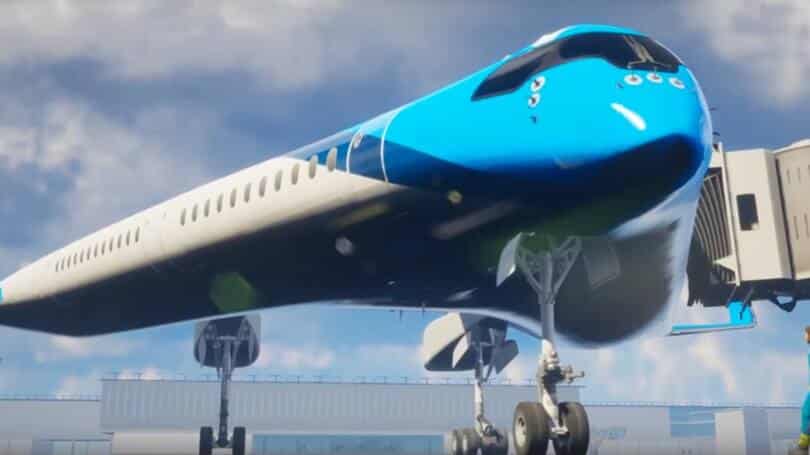The development of Flying-V, a triangular-shaped aircraft that adopts revolutionary features, has received new impetus with the announcement of financing by the Dutch national airline KLM.

Born to improve the sustainability of air travel, Flying-V was conceived by Justus Benad, still a student at the Technical University of Berlin at the time of the projects, and subsequently developed by researchers at the Delft University of Technology in the Netherlands.
Its futuristic design incorporates the passenger cabins, the tank and the holds directly into the wings: with this system the aircraft uses 20% less fuel than the Airbus A350-900 for the same number of passengers (and the same wingspan).

“In recent years KLM has been a pioneer in the sustainability of civil aviation,” explains in a press release Peter Elbers, CEO and president of KLM. “We are proud of the increasingly intense collaboration with the TU Delft university.”
The project leader at the Dutch university, Roelof Vos, echoes this by underlining the need for innovation to make civil flight take steps forward in the direction of technology and efficiency, with the aim of eventually creating fully electric airplanes on a large scale.
Flying-V's energy efficiency is the result of its cutting-edge aerodynamics, which also contributes to the aircraft's low weight. In September the first small-scale model capable of flying will be completed, and the following month it will be the turn of the passenger cabin, this time full-sized, which will be installed in Amsterdam's Schipol airport to also be visited by the public.

If they seem close stages, however, I will have to extinguish the ardor: the entry into service of this aircraft which will completely subvert the rules of design will not take place before a very rigorous series of safety tests, which can last up to 20 years.
“We are in the preliminary testing phase, it will take months, perhaps years in the wind tunnel to optimize efficiency, stability and sustainability”.


